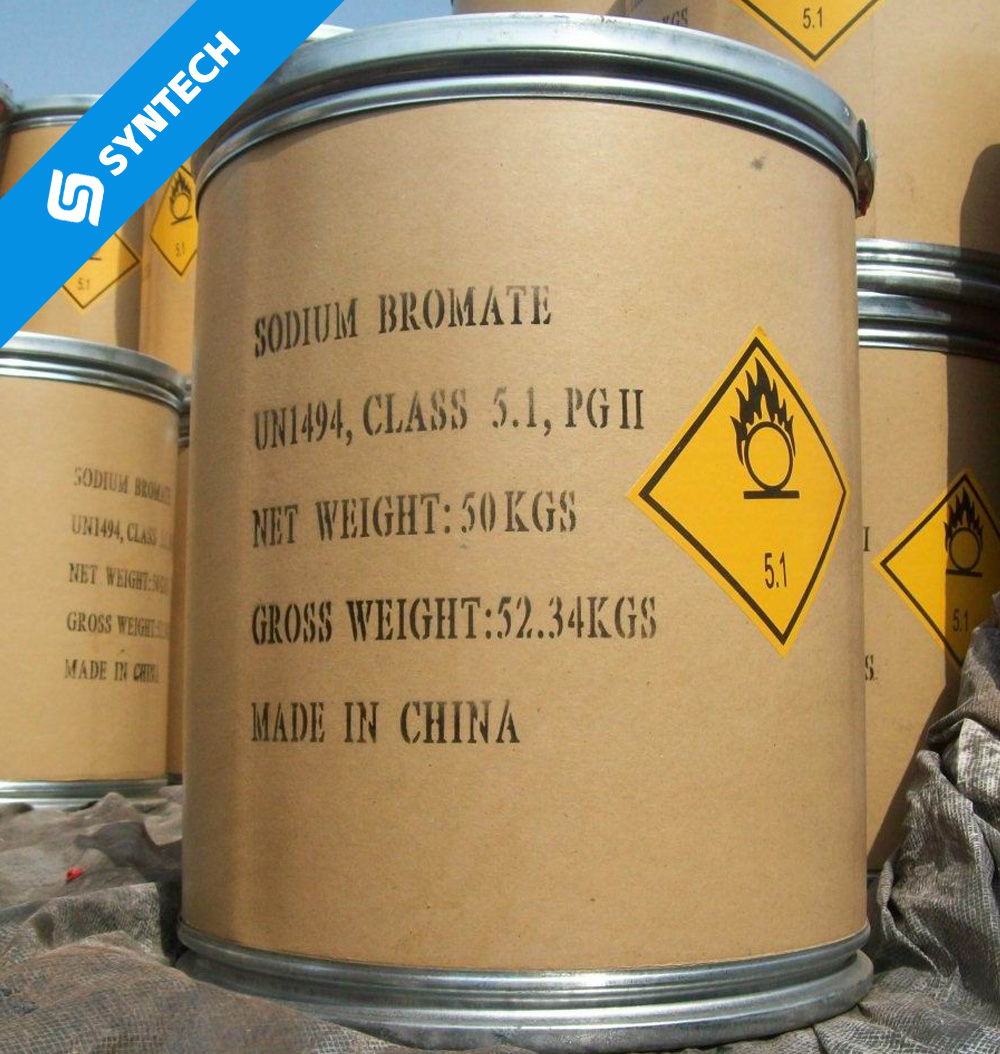Sodium Bromate is a powerful oxidizing agent, mainly used in preparing permanent-wave neutralizers, printing and dyeing auxiliary, chemical reagent, gold solvent in gold mines when used with Sodium Bromide. It’s a bromate-based formulation of oxidizing agents for use in continuous or batch…
1. General Description
Molecular formula: NaBrO3
Molecular weight: 150.9
CAS No.: 7789-38-0
EC No.: 232-160-4
2. Applications
Sodium Bromate is a powerful oxidizing agent, mainly used in preparing permanent-wave neutralizers, printing and dyeing auxiliary, chemical reagent, gold solvent in gold mines when used with Sodium Bromide. It’s a bromate-based formulation of oxidizing agents for use in continuous or batch dyeing processes involving sulfur or vat dyes. It is also used as the raw material of some pesticides and pharmaceutical intermediaries
3. Specifications
Standard: HG/T2766-1996
| Appearance | White Crystalline Granules |
| Assay (as NaBrO3) | 99.5% min. |
| pH (5% solution) | 6.5+/-1 |
| Absorbance (20% solution) | 0.05% max. |
| Moisture | 0.1% max. |
| Chloride & Chlorate | 0.05% max. |
| Bromide | 0.05% max. |
| Sulphate | 0.01% max. |
| Arsenic | 2 ppm max. |
| Heavy Metals (as Pb) | 5 ppm max. |
| Iron | 5 ppm max. |
4. Flammability and Explosivity
Strong oxidizing agent, may ignite spontaneously or when subjected to friction or shock and may burn with explosive violence, when in contact with powdered materials such as sulphur, carbon or metal powders.
5. Toxicity:
LD50 (oral, rat): 301 mg/kg
Sodium Bromate is an irritant to the eyes, skin and mucous membranes.
Harmful if swallowed.
6. Packaging:
– 50 kg, or 25kg net fibre drums with inner double PE bags.
– 25 kg PP woven bags with inner double PE bags.
– 50 lb plastic pails with inner double PE bags.
– 20kg paper box with inner double PE bags.
7. Storage and Handling:
Avoid inhalation, ingestion and contact with eyes and skin. Store in a dry, cool, well-ventilated area, away from
Ammonium compounds and sulphuric acid. Wear body-covering clothes and boots, safety glasses, protective
Gloves and a dust respirator.


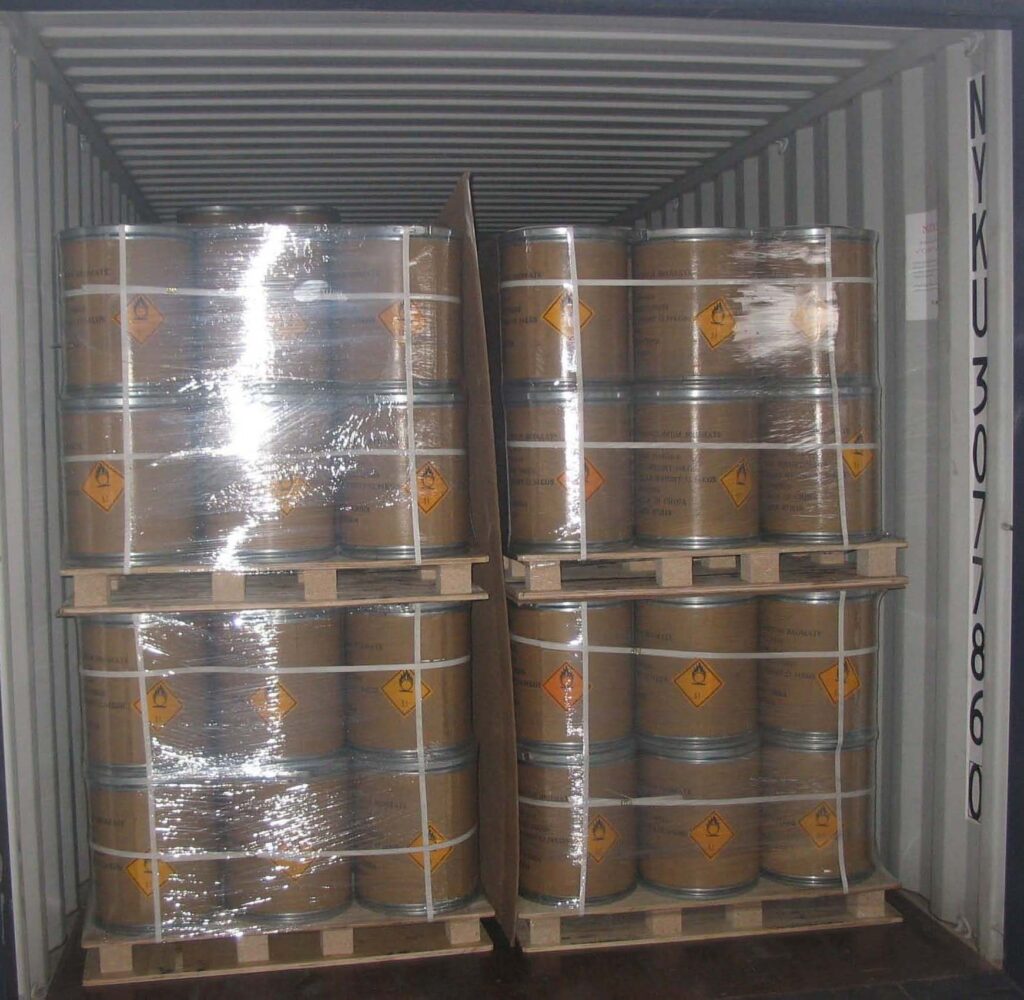
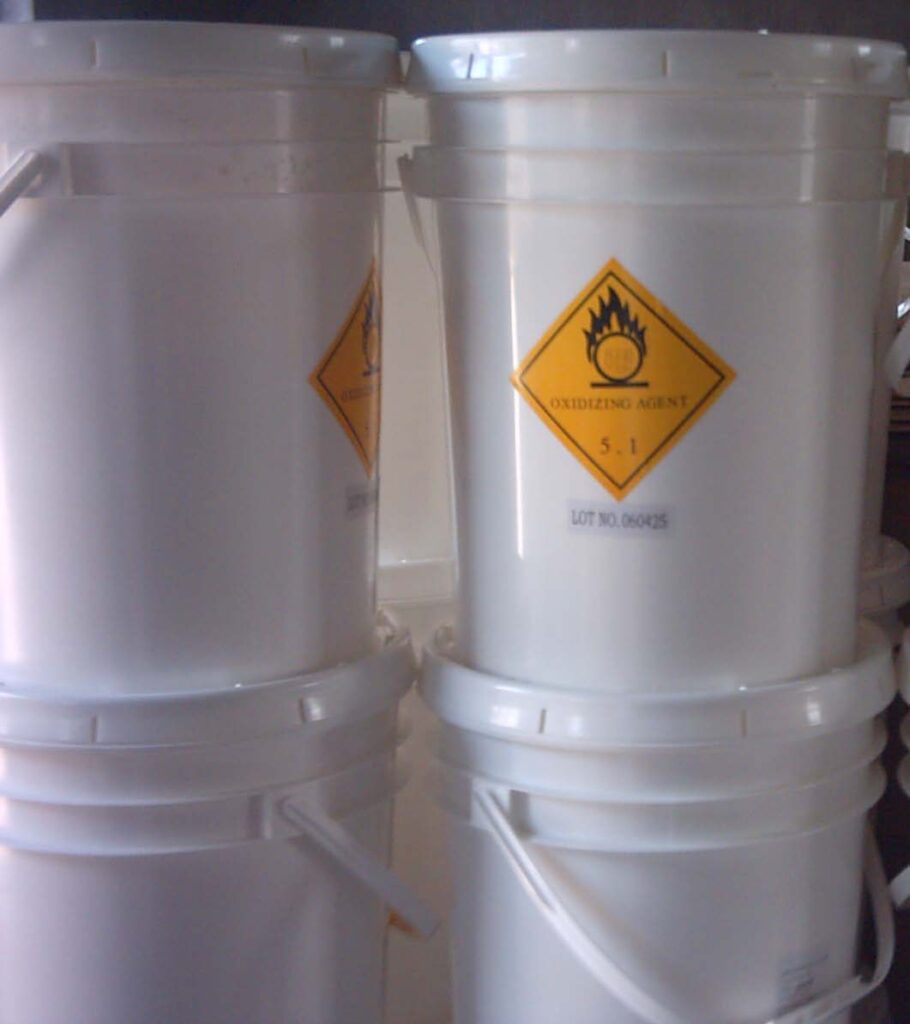
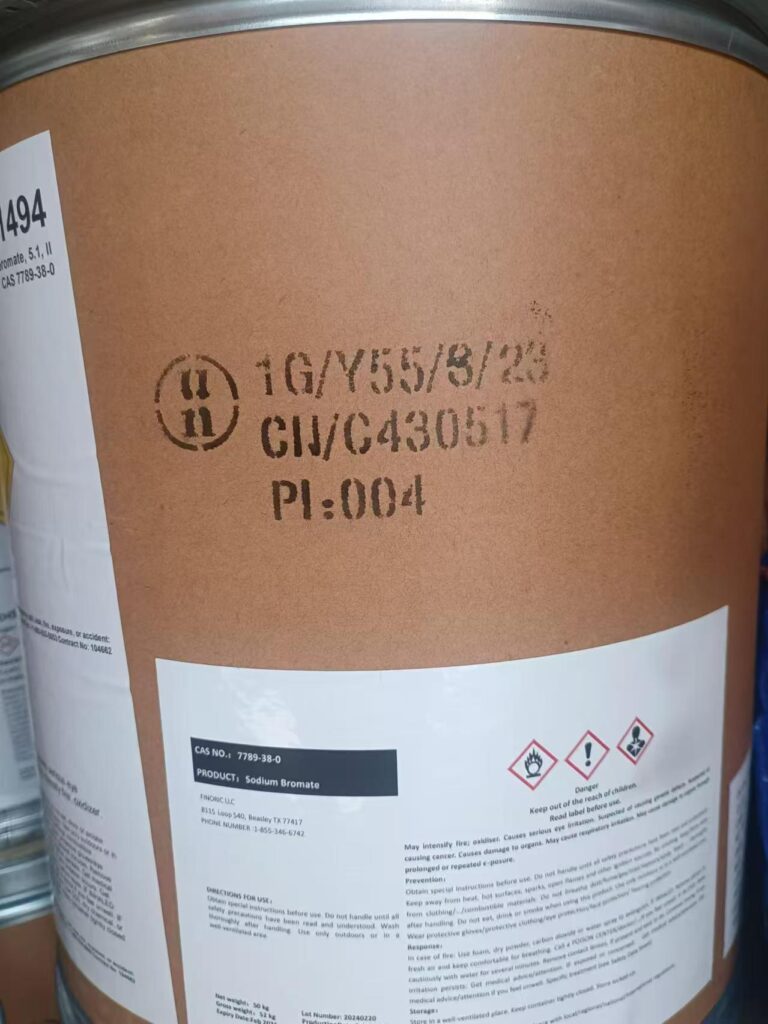
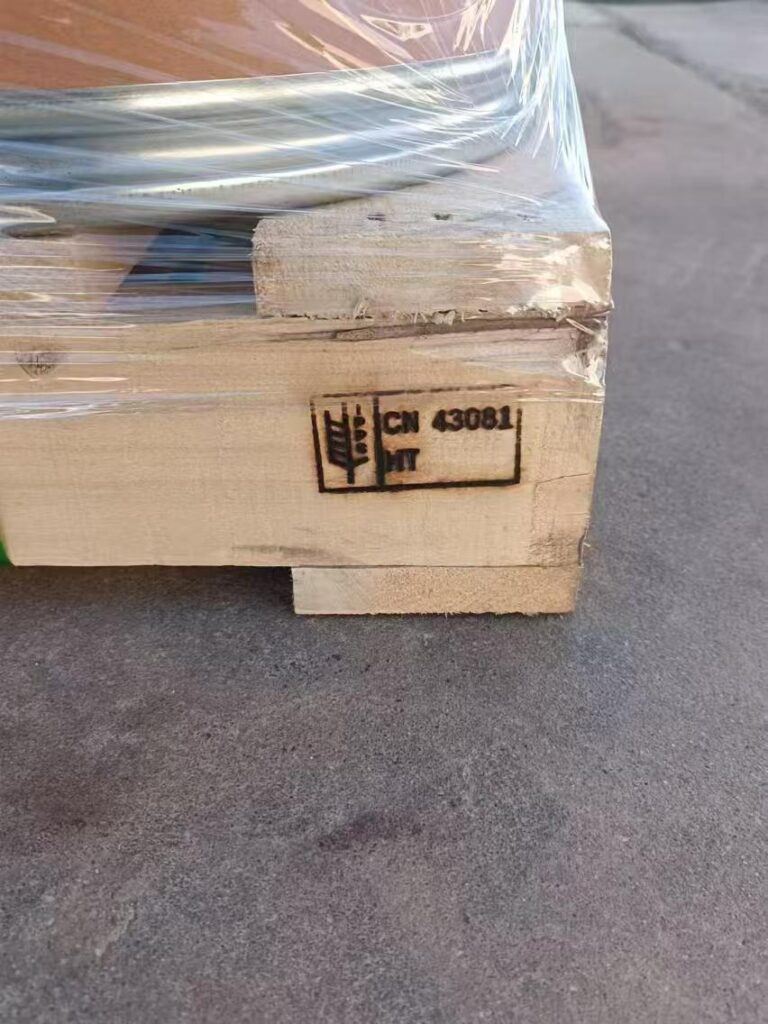
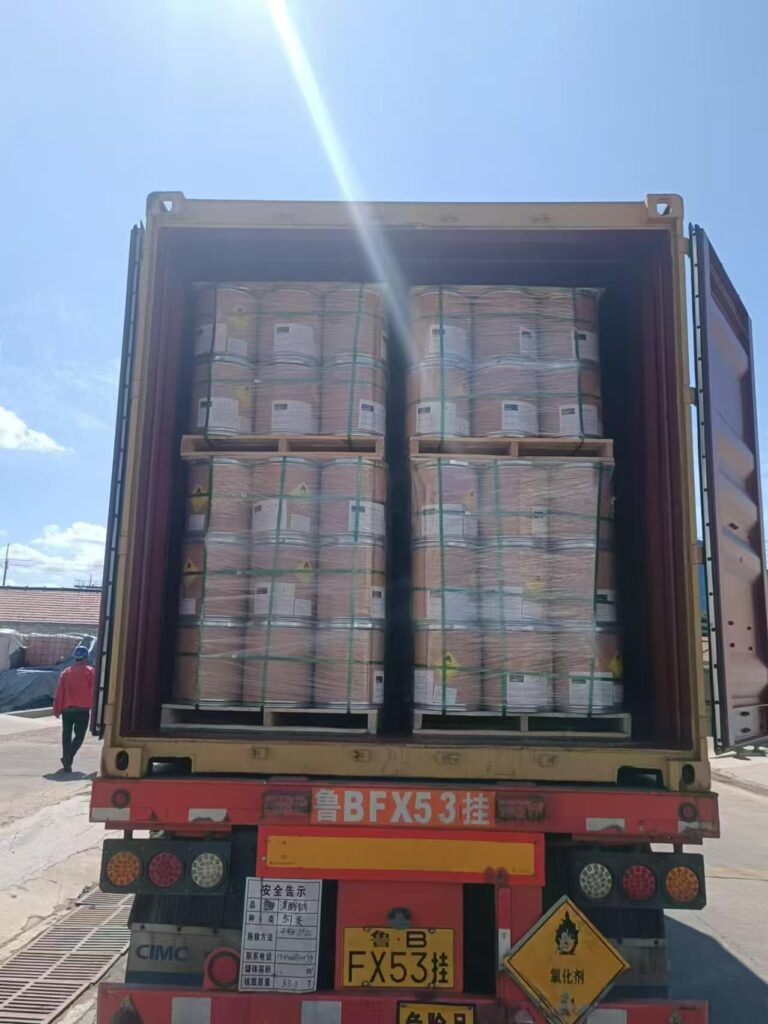


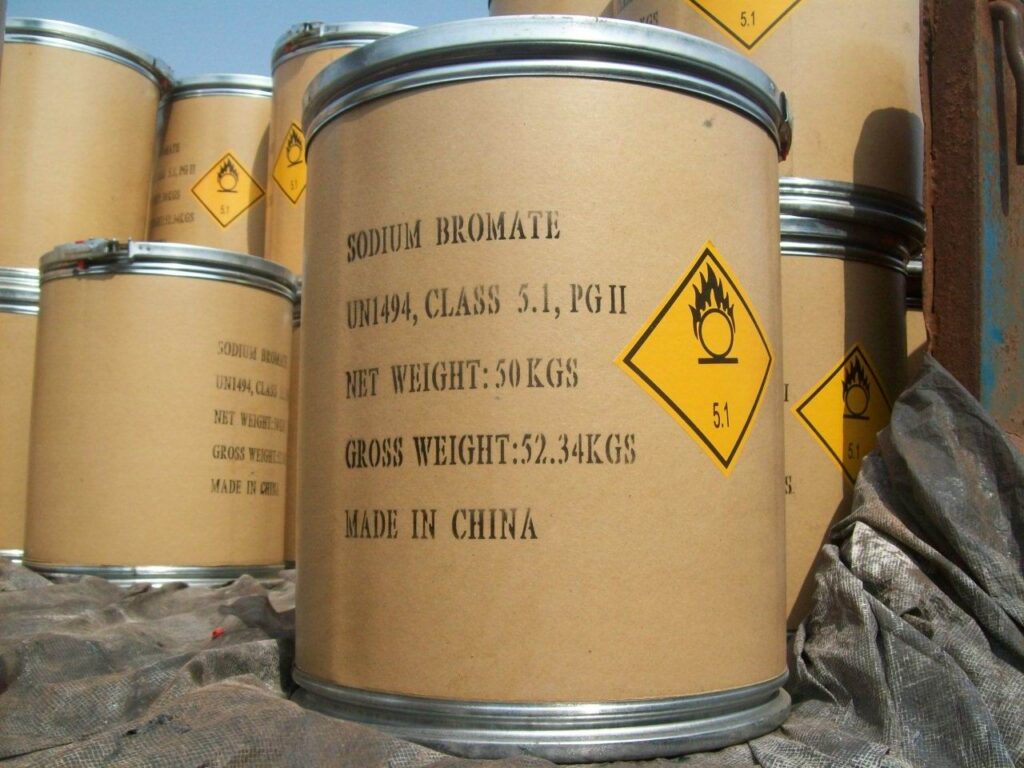
Basic Information
- Chemical Formula: NaBrO₃
- Molecular Weight: 150.89 g/mol
- CAS Number: 7789-38-0
- Appearance: White crystalline powder or colorless crystals, odorless.
- Density: 3.34 g/cm³ (at 17.5°C).
- Melting Point: 381°C (decomposes, releasing oxygen) 14. Some sources list 755°C.
- Boiling Point: 1390°C.
- Solubility:
- Highly soluble in water (36.4 g/100 mL at 20°C, increasing with temperature).
- Insoluble in ethanol.
Chemical Properties
- Oxidizing Agent: Strong oxidizer, reacts violently with combustible materials, organic compounds, sulfides, and metals (e.g., aluminum, copper).
- Decomposition: Breaks down at high temperatures, releasing oxygen and forming sodium bromide (NaBr).
- Hazardous Reactions:
- Explosive when mixed with reducing agents (e.g., sulfur, phosphorus).
- Reacts dangerously with sulfuric acid.
Uses
- Oxidizing Agent:
- Used in chemical synthesis and analytical chemistry.
- Gold Extraction:
- Mixed with sodium bromide to dissolve gold.
- Cosmetics:
- Employed in cold wave hair treatments (permanent wave solutions).
- Textile & Paper Industries:
- Acts as a bleaching and finishing agent for wool and paper.
Safety & Hazards
- Toxicity:
- LD₅₀ (mouse, intraperitoneal): 140 mg/kg.
- Harmful if swallowed or inhaled; irritates eyes, skin, and respiratory system.
- Handling Precautions:
- Avoid contact with organic materials, metals, and acids.
- Use protective gear (gloves, goggles) and work in ventilated areas.
- Storage:
- Keep in a cool, dry place, away from flammable substances.
Regulatory Information
- UN Number: 1494 (Class 5.1 Oxidizer).
- GHS Hazard Symbols:
- Oxidizer (O), Harmful (Xn), Irritant (Xi).
- Risk Phrases:
- R8 (fire risk with combustibles), R22 (harmful if swallowed), R36/37 (irritates eyes/respiratory system).
Synthesis Methods
- Chlorine Oxidation of Bromine:
- Bromine reacts with calcium hydroxide, followed by chlorination to form bromate, which is then converted to sodium bromate.
- Electrolysis:
- Oxidation of sodium bromide in an electrolytic cell.




